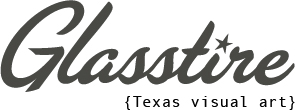What does it mean for a curator’s work to be curated into an exhibition? Generally open calls are meant for artists whose pieces will either be juried into a group exhibition or selected for a solo show. This year, Un Dique, the curatorial duo of Octavio Castrejón and Alonso Robles, was chosen for one of three exhibition spots through the Stanlee and Gerald Rubin Center for the Visual Arts at the University of Texas at El Paso’s 2024-2025 Genius Loci open call.
The initiative was launched in 2023 to support regional creatives. Each year, the Rubin Center seeks exhibition proposals, and a panel of jurors selects three applicants to spotlight. Past participants include El Paso-based artists Laura Turón and Christin Apodaca and Las Cruces-based artist Marcus Xavier Chormicle.
Henry Alfonso Schulte, the Rubin Center’s Assistant Curator of Practice, organized the exhibition Un Dique: Iterations of Interrupted Space, which showcases Castrejón and Robles’ curatorial practice. Throughout the small exhibition space, artworks from eight of Un Dique’s projects since its formation in 2023 are displayed. In this setting, the art acts as ephemera, a relic of a previous experience, event, or happening.
One of the earliest pieces in the show is a video of Conejx, a Ciudad Juárez-based DJ, performing a set in a popular mercado. The majority of the video depicts Conejx inside a small clothing booth, as viewed by passersby. Occasionally the camera shifts to provide a glimpse of people gathered to listen and groups walking past the artist as they peruse the market. This performance was one component of Un Dique’s inaugural project, SinLugar (With No Place), which included four activations throughout Juárez in Fall 2023.
Without a permanent exhibition space, Un Dique presents temporary projects in non-traditional venues. The name “Un Dique” means dike or levee, a structure created to prevent flooding by redirecting rising water, which essentially creates a productive pathway for excess rainfall. This is the duo’s aim — to create pathways that do not currently exist for the groundswell of emerging artists in the Juárez region.
Nayeli Hernandez’ installation references another SinLugar event: Tres Niveles de Vulnerabilidad (Three Levels of Vulnerability). Originally hosted at Botas El Dorado, a Juárez-based boot shop, the installation includes ceramic tear drops hanging in the air, vinyl prints that resemble scarring or tearing, and leather boots. The handcrafted tears are perfectly imperfect, their lumpy surfaces reminiscent of bruised pears. The juxtaposition of the dimpled tears with the impeccably crafted boots calls into question notions of rugged masculinity, often associated with cowboy culture. Together the objects speak to pain, grief, sensitivity, and strength.
Mariana Ajo’s prints consider the shifting history of beauty standards. Through photographs of her grandmother, mother, and self, set alongside icons of their respective eras, the artist presents the notion that over time ideas of beauty have become disjointed from one’s geographic place and cultural references to become more globalized. While her grandmother modeled herself after Mexican movie star María Felix, Ajo’s own comparison is with Kylie Jenner. Globalization is not new. As long as people have existed, they have traveled, and through that migration, cross-cultural encounters and exchange have shaped societies. And while there is much to gain through these shared moments, there is also a risk of loss.
When I visit an exhibition, I often contemplate what the show reveals about the curator. We can investigate individual works of art and solo exhibitions and, in doing so, learn about a particular artist, but the curator’s hand (and perspective) is ever-present. For Un Dique: Iterations of Interrupted Space, the show is explicitly about a pair of curators. So, walking through, exploring the art, and learning about Un Dique’s curatorial oeuvre, I considered what their past shows and events have revealed about them.
Unlike Un Dique’s previous projects, which were held in nontraditional spaces like storefronts and random unused spaces throughout the city, Ajo’s Iconic Standard was hosted at Museo de Arte de Ciudad Juárez. And with this show at the Rubin it may appear the duo is moving into more typical art spaces, this is not exactly the case. Rather than focusing on exhibiting in traditional venues Un Dique is working within established institutions to have access to resources that can better support artists.
Un Dique is part of a lineage of young creatives eager to generate opportunities. They see gaps in the structure of the art world and have solutions, not just to fill the holes, but to break apart the foundation and shape something new.
Creatives selected for the Genius Loci series are provided an honorarium; Un Dique was adamant about using those funds to support the artists they work with. After seeing the show, I spent an afternoon in Juárez, exploring emerging community art spaces, including Azul Arena — where I found Castrejón and Robles officing. The pair spoke with me about the history of their curatorial project and their upcoming plans.
Castrejón and Robles reiterated that Juárez’ art scene has been lacking for a long time. They emphasized the need for alternative spaces and for curators to adapt to a new way of working that includes fluidity and thinking beyond the traditional white-walled gallery. Their goal for Un Dique is not to open a new art venue, but to present exhibitions in unexpected places throughout the city. As they apply for grants, Castrejón and Robles are moving beyond funding singular projects and aiming to support emerging artists in a more sustainable way.
Un Dique: Iterations of Interrupted Space is on view at the Rubin Center in El Paso through June 27, 2025.








